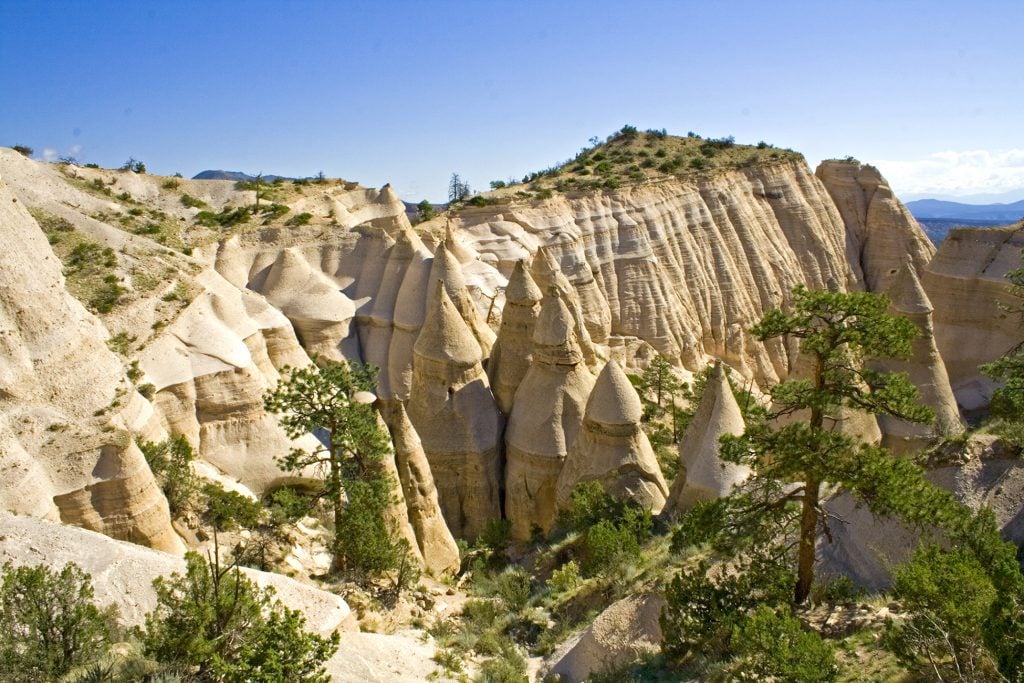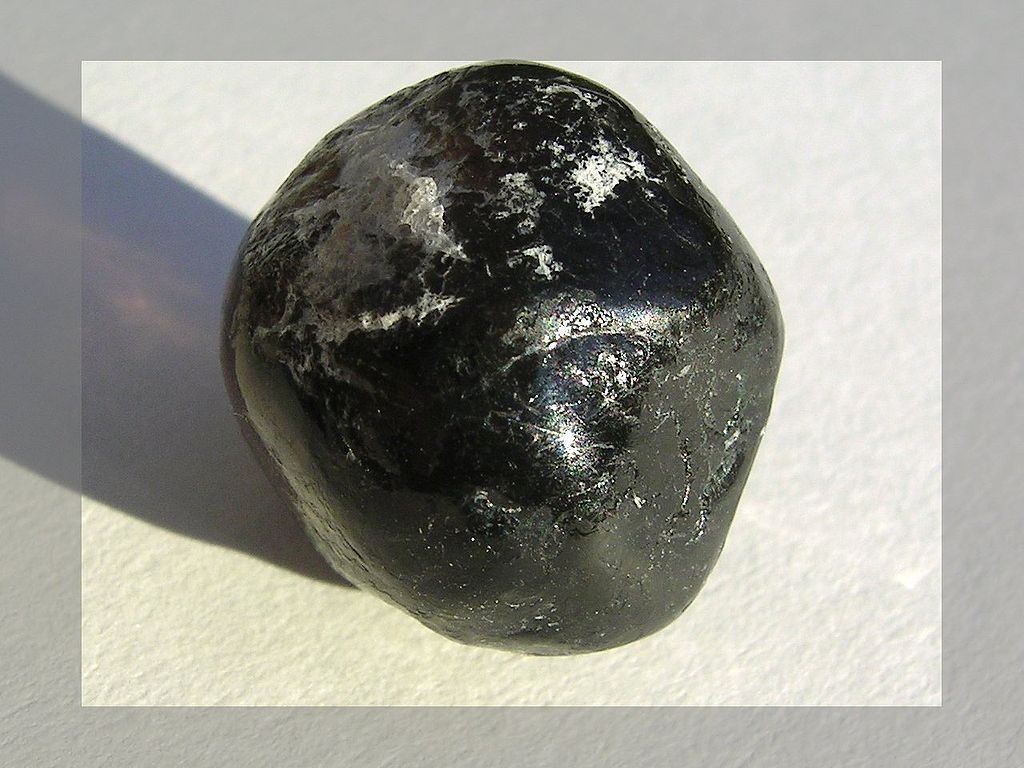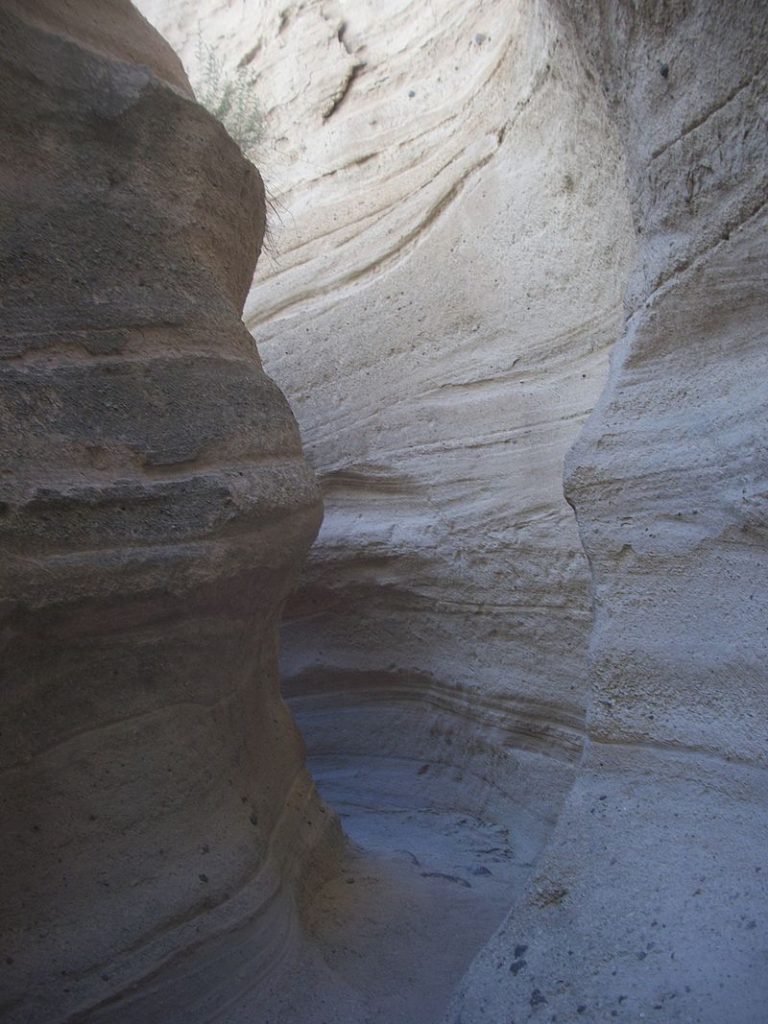The Santa Fe, New Mexico area offers a multitude of cultural and scenic attractions for RVers. One of the more scenic areas to explore is Kasha-Katuwe Tent Rocks National Monument, located about 40 miles west of Santa Fe near the Pueblo de Cochiti, a historic pueblo of the Cochiti people.
Kasha-Katuwe, or “White Cliffs” Tent Rocks is a sacred area to the Puebloans. Archeological evidence shows that ancient people have inhabited the area for the past 4,000 years.

The magical hoodoo landscape of the Kasha-Katuwe Tent Rocks National Monument (Photo by Julius R, Wikipedia)
Julius Rückert., CC BY-SA 3.0, via Wikimedia Commons
The unique geologic formations originated between 7 million years to 1.25 million years ago when the Jemez Volcanic Field erupted in violent explosions resulting in pyroclastic flows. A dense and destructive “avalanche” of very hot ash, lava fragments, and gasses ejected from a volcanic eruption and flowing downslope at high speeds, sometimes reaching upwards of 400 miles per hour.
This volcanic debris later settled and cooled into geologic formations containing pumice, ash, and glass shards known as ignimbrites. These deposits are over 1,000 feet thick. Geologists have determined that about 35 unique volcanic eruptions are recorded in the strata around Tent Rocks.

Obsidian “Apache Tear” (Photo by Simon Eugster, Wikipedia)
These layered deposits have subsequently been eroded into spires, or “hoodoos”, some with balanced rocks perched on top of the remaining caprock. Over the last million years, water and wind have eroded the softer materials from around these spires, leaving a magical landscape of pedestals and cones.
Apache tears, small rounded pieces of black volcanic glass known as obsidian, are commonly found around Tent Rocks. They are considered sacred, and collecting is NOT permitted. During the spring, abundant wildflowers bloom in the area, bringing multitudes of birds and animals to the area.
The Bureau of Land Management manages the National Monument, which was established in 2001. There are hiking trails through the hoodoos and slot canyons that total about 3 miles of moderate hiking up to an elevation of 6,760 feet.

Hike up a slot canyon through geologic time (Photo by Vitale Baby, Wikipedia)
Mr. Vitale (talk), CC BY 3.0, via Wikimedia Commons
There is also a mile-long loop trail that is wheelchair accessible allowing views of the area including the Jemez Mountain peaks and Peralta Canyon.
Because of the sacred nature of the area and the delicate ecologic systems, you are not permitted to leave the established trails. As with all National Parks and Monuments, dogs are not allowed.
During the busy summer months the trails can become crowded, so getting an early start or visiting during the off-season will allow you a quieter experience.
You will also want to keep an eye on the weather, as afternoon thunderstorms can produce dangerous lightning and flash-flooding.
The Kasha-Katuwe Tent Rocks National Monument is day-use only, with gates open between 8 am and 4 pm year-round. An interactive map of the area can be found here.
Camping sites are available nearby at the Cochiti Recreation Area on Lake Cochiti or the Paliza Campground in the Lower Paliza Canyon. Boondocking may be available in the Santa Fe National Forest as well.

Thank you, that was very interesting, we’ll try to make it there this fall when we head that direction!!
THANKS for the background geology on this unique area!
We spent about a week at Cochita Lake campground, which is just a few miles from this jewel. We had a wonderful time hiking up the trail, right up to the very top. The formations were absolutely fantastic! The hike was fun and challenging. We even saw some hieroglyphics etched into a wall there. Our camp was fantastic, up on a hill with sweeping views, as well. I highly recommend this little side trip if you are out in the area.
Thanks That’s wild have to go there with my wife
“As with all National Parks and Monuments, dogs are not allowed.”. This statement is absolutely NOT true when stated like this. Dogs ARE allowed in National Parks and monuments, although where they can go is determined by the individual park or monument. However, at this particular place (tent rocks) the statement IS true. You are not even allowed to enter the parking lot with a dog in your vehicle.
A couple of things to note about Tent Rocks: the rock formations are on BLM land but the road passes through Cochiti Pueblo land with strictly enforced speed limits – slow down and enjoy the sights. Also since it is a national monument the America the Beautiful Senior pass will allow free entrance.
As I recall there are vault toilets at the parking area but not sure if there is water so be sure to take water with you as it can be hot and dry.
The rock formations are amazing and the hike to see them is easy except for a optional short bit that goes up a hill and provides a great view down at the area.
This place was New Mexico’s best-kept secret when we visited there about five years ago. We knew about it only because a friend who lives near Albuquerque did some hiking there and posted pictures on her Facebook page. When I posted pictures on my own page, other friends of mine who live in that area said that they’d never heard of it before.
A couple of additions/corrections: Service dogs are allowed in the park and on the trails. My friend’s husband has a severe hearing loss and had his service dog with him. Our own dog, a family pet, had to stay in our trailer outside the park while we hiked. Yes, you’d better take a good water supply on the trail with you; you’ll definitely need it in the warmer months, and there’s no water in the park. And the nearby Pueblo closes the park on occasion; I think it’s for sacred festivals of theirs. They regard it as holy ground. Not a bad idea to check to make sure it’ll be open before you drive all the way out there.